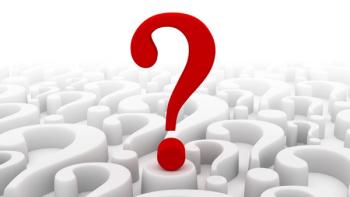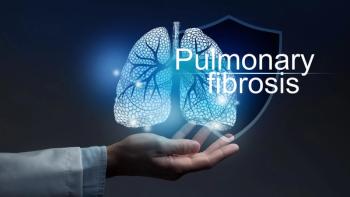Editor’s Note: This article was published in Pharmaceutical Technology Europe’s June 2021 print issue.
- Pharmaceutical Technology, June 2021 Issue
- Volume 45
- Issue 6
Navigating International Pharmacovigilance
International pharmacovigilance for biotechs brings about a particular set of challenges, especially for small companies, which face the same rigour as large pharma companies.
As biotechs grow in market prominence, the reality is dawning that their pharmacovigilance (PV) obligations are equivalent to those of pharma companies several times their size. For young, ambitious, product-oriented companies, such demands could be a barrier to market success, unless they devise optimum strategies for fulfilling the differing safety demands of respective regulators.
Companies with ambitions for Europe and the United States tend to favour filing in the US first. On top of the US market’s vast size, it benefits from being a single country governed by one main agency—the US Food and Drug Administration (FDA). In Europe, marketing authorization can take much longer because beyond the central European Medicines Agency (EMA) each European Union (EU) member state has its own unique requirements to navigate.
Taking the US and EU as key territories, the diverse PV requirements highlighted in the following give a flavour of just what’s involved and where biotechs are likely to need help.
Pre-marketing expectations
Although in the pre-marketing stage of development, most PV requirements are harmonized across the European and US markets, there are some small, noteworthy variations—for instance FDA’s particular requirements around causality assessment, affecting what’s submitted in the two regions.
Even at a central level, EMA submissions have a different look and format to US dossiers, so they require different handling. For instance, the Summary of Product Characteristics (SmPC) and labelling in relation to side effects are not presented in the same way in Europe.
Differences exist too between the risk management approaches—FDA’s Risk Evaluation and Mitigation Strategies (REMS) versus EMA’s Risk Management Plan (RMP)—and one cannot be substituted for the other. Failure to factor in these differences could present an issue at the time of filing. In addition, national EU-specific requirements may be requested in certain countries, on top of the RMP EU requirements, even for centralized procedures.
To successfully and efficiently navigate the differences between regions, biotechs must set out a clear strategy and timeline for how they will file to their target markets, and plan for multiple markets concurrently (it could take a long time to prepare for EMA’s diverse requirements)—and those of each EU country beyond that, plus the United Kingdom, which now sits outside of the EU/EMA.
It isn’t just European information and formatting requirements that differ and are more involved than in the US. Standard operating procedures (SOPs)/process requirements can be more complex in Europe too. Although, during the pandemic, ‘crisis mode’ enabled emergency acceleration of these processes to expedite the marketing authorization of vital products such as the US-originating Moderna vaccine for use in European markets. This approval was ‘conditional’, and such measures are temporary and cannot be expected going forward.
Post-marketing
The post-marketing regulatory environment is highly regulated and inspection driven, and it is here that biotechs are likely to find the greatest challenges in managing their PV obligations. In post-marketing, the differences between US and European requirements are starker than for pre-marketing.
Europe overhauled its post-marketing PV requirements a couple of decades ago, making these very clear and prescriptive. For post-marketing safety studies, for instance, it has broken down the requirements for interventional versus non-interventional studies and what needs to be reported—or left out—for each. In the US, equivalent post-marketing safety requirements are much older and leave much to interpretation, so companies tend to tread a more cautious path.
Where Europe is content with a final study report, in the US companies still file expedited single case reports; in the EU, expedited reporting is required for Individual Case Safety Reports (ICSRs) for post-marketing safety studies. If studies are used to support a product claim, and the right data have not been collected in the right way for the given market, this could pose problems. So, the different requirements must be well understood and designed into post-marketing and market research studies.
Acquiring the right skillsets
Although biotechs may lead the way with product expertise, this is not typically matched in understanding and expertise in PV requirements and process rigour. To mitigate safety compliance-related risk, they need to establish both the right knowledge and experience, plus skills in writing SOPs and setting up PV systems which, in Europe, must be in place from the time of marketing authorization application (MAA) filing.
Relying on a third-party safety services provider to take on this burden without in-house oversight is not recommended—not least because the marketing authorization holder (MAH) retains ultimate responsibility for PV compliance. Irrespective of the biotech’s size and scale, then, it will need to bring in someone experienced who understands PV and can keep a check on vendor quality.
In Europe, a nominated qualified person responsible for PV (QPPV) is personally responsible for the safety of the human pharmaceutical products marketed by that company in the EU. There will need to be a designated person inside each region, too: so, a US company with European marketing authorization must have a named QPPV based in Europe; and potentially also at a country-level (in France and Spain this is a regulatory requirement).
Establishing remits and responsibility
Where biotechs have entered into distribution relationships with other MAHs, there will be additional considerations—such as who will coordinate and be responsible for the PV requirements in a given market and how this will be written in any contracts. The MAH in the local country always is ultimately responsible for meeting PV requirements in that country. There is also the decision of who will be the global PV database holder (usually the company that developed the product and secured approval).
PV capabilities shouldn’t stand still, either. Biotechs will need to keep pace with both changes to regulatory requirements across all markets globally, and evolving channels and technologies when tracking safety signals; companies have an obligation to monitor and filter web/social media forums for potentially important real-world safety information, where digital media is company-sponsored.
Meanwhile, the increase in combination treatments involving drugs and devices could trigger new rules clarifying how responsibility for adverse drug reactions is apportioned, another situation that needs to be tracked. Establishing an appropriate PV budget will be essential for any biotech navigating all of this international complexity.
About the Authors
Judith M. Sills, PharmD, and Eric Caugant, are both nonexecutive directors and advisors to Arriello—a provider of risk management and compliance services to the Life Sciences industry.
Article Details
Pharmaceutical Technology Europe
Vol. 33, No. 6
June 2021
Pages: 39–40
Citation
When referring to this article, please cite it as J.M. Sills and E. Caugant, “Navigating International Pharmacovigilance,” Pharmaceutical Technology Europe 33 (6) 2021.
Articles in this issue
over 4 years ago
New Biotherapies Push Technological Innovation Forwardover 4 years ago
Assessing Risk and Production of Potent Substancesover 4 years ago
Moving Beyond Particle Size Controlover 4 years ago
Cleaning Continuous Manufacturing Equipmentover 4 years ago
Considering Robotics for Drug Compoundingover 4 years ago
Considerations for Cleaning Biopharmaceutical Process Equipmentover 4 years ago
Prioritizing Cleaning Validationover 4 years ago
Developing a Method for Success through Partnershipsover 4 years ago
Pandemic Highlights Need for Advanced Pharma ManufacturingNewsletter
Get the essential updates shaping the future of pharma manufacturing and compliance—subscribe today to Pharmaceutical Technology and never miss a breakthrough.






